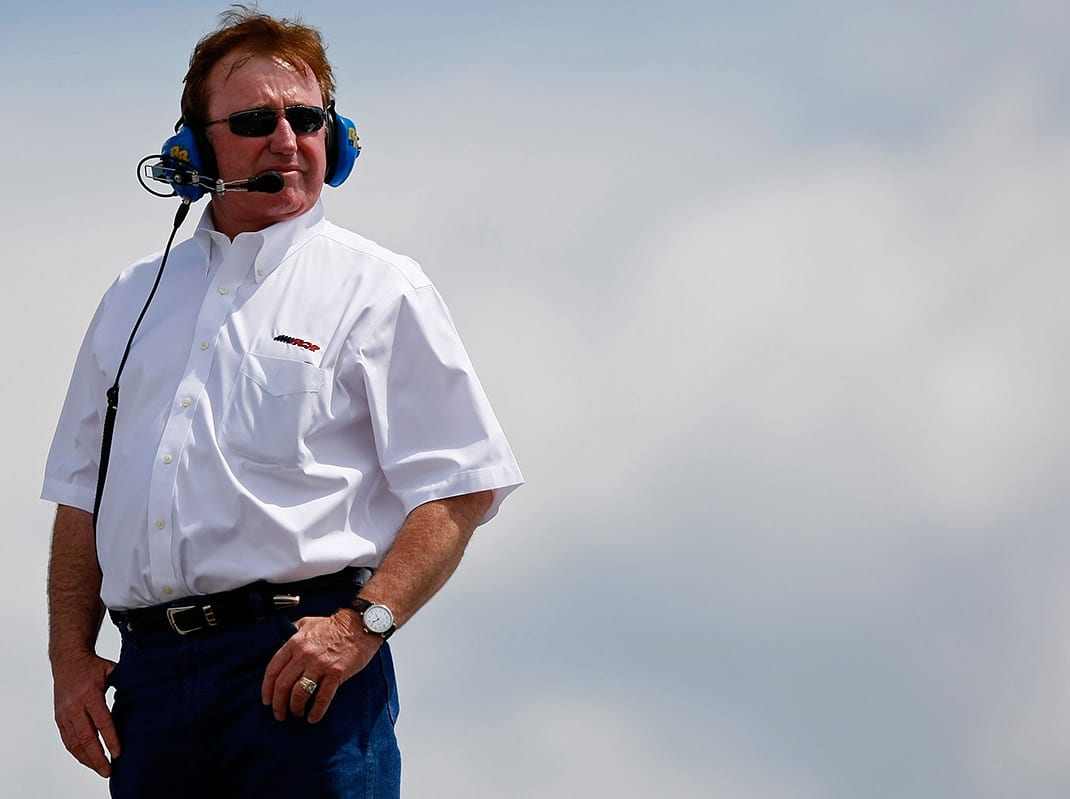“He was extremely consistent as far as lap times were concerned,” Wheeler remembered. “There’s no question in my mind that had he had some good equipment, he would have won some races. That last $100,000 wasn’t there. He would always show up at the track with no money. He just didn’t have it, but he was a smart guy who managed the money he did have very well. I always thought he would make a great car owner.
“Had he had good equipment, he would have won his share of races. He probably would have gotten a ride in someone’s car had he raced long enough. He knew how to make a car handle. He had a knack for that.”
By 1981, Cup racing was enjoying an influx of new team owners with money to build super teams. J.D. Stacy, Rod Osterlund, Harry Ranier and Warner Hodgdon were winning races with top drivers and helping to move NASCAR into the mainstream alongside other professional sports. Money buys performance and finishes near the front were becoming harder for Childress to obtain.
He ran 20 races that season but saw the chance to gain a huge asset in the form of Dale Earnhardt, a rising star who logged his first Cup championship the year before.
“The reason I quit driving as young as I did (age 35) was because I could see the sport changing,” Childress said. “I could get in the top 10 quite a bit but when they came in, that moved me back to finishing 15th or 20th and I didn’t want to finish that far back. If I didn’t do something, I was going to be out of business.
“I knew getting Dale was an opportunity to put something good together. A lot of times, opportunity doesn’t knock twice. I had to take the chance and put this deal together with Dale,” he continued. “I wasn’t really ready to get out of the car, but talking to Junior and seeing where the sport was going with all the money people coming into it, I decided to do it. J.D. Stacy bought Osterlund out (midway through 1981) and Dale didn’t want to be sold. That’s when we put our deal together.”

Earnhardt ran the final 10 races of 1981, logging two top-five and six top- 10 finishes. Even though their union was promising, Earnhardt moved to Moore’s Ford team for the 1982 and ’83 seasons. Childress hired Ricky Rudd for 1982 after he was released from DiGard Racing. On June 5, 1983, each enjoyed their first Cup victory on the road course in Riverside, Calif.
Bob Moore, a longtime motorsports reporter and public relations executive with R.J. Reynolds Tobacco Co., remembers how Childress was frugal with every dollar earned.
“Richard was an extremely smart driver,” Moore said. “He never lost sight of the fact he was running on a very limited budget. He seemed to know how to get the maximum out of what he had to work with. He did very well for basically a two- or three-man team as far as those helping him out.
“He knew he couldn’t race with Richard Petty or David Pearson or Bobby Allison, so his goal was to beat the pack of cars he was racing and most of the time he did,” Moore noted. “There’s no telling how much better of a job he would have done had he been in a better car. There were the elite eight, 10 or 12 guys and then the next pack. Richard was in that group. His goal was to be first in that pack.”
Childress and Earnhardt reunited in 1984 and collected six Cup championships together before Earnhardt’s death in 2001. All told, RCR’s teams have amassed just shy of $260 million in winnings. But money is no longer an issue for the team owner loved and respected by fans around the world.
“If I would have had the opportunity to drive one of the front-running cars of that era and not owned a team, I would have never learned the business,” Childress said. “The one education I got out of being a driver-owner was that it taught me how to be a businessman and still understand the competition side of it.”
